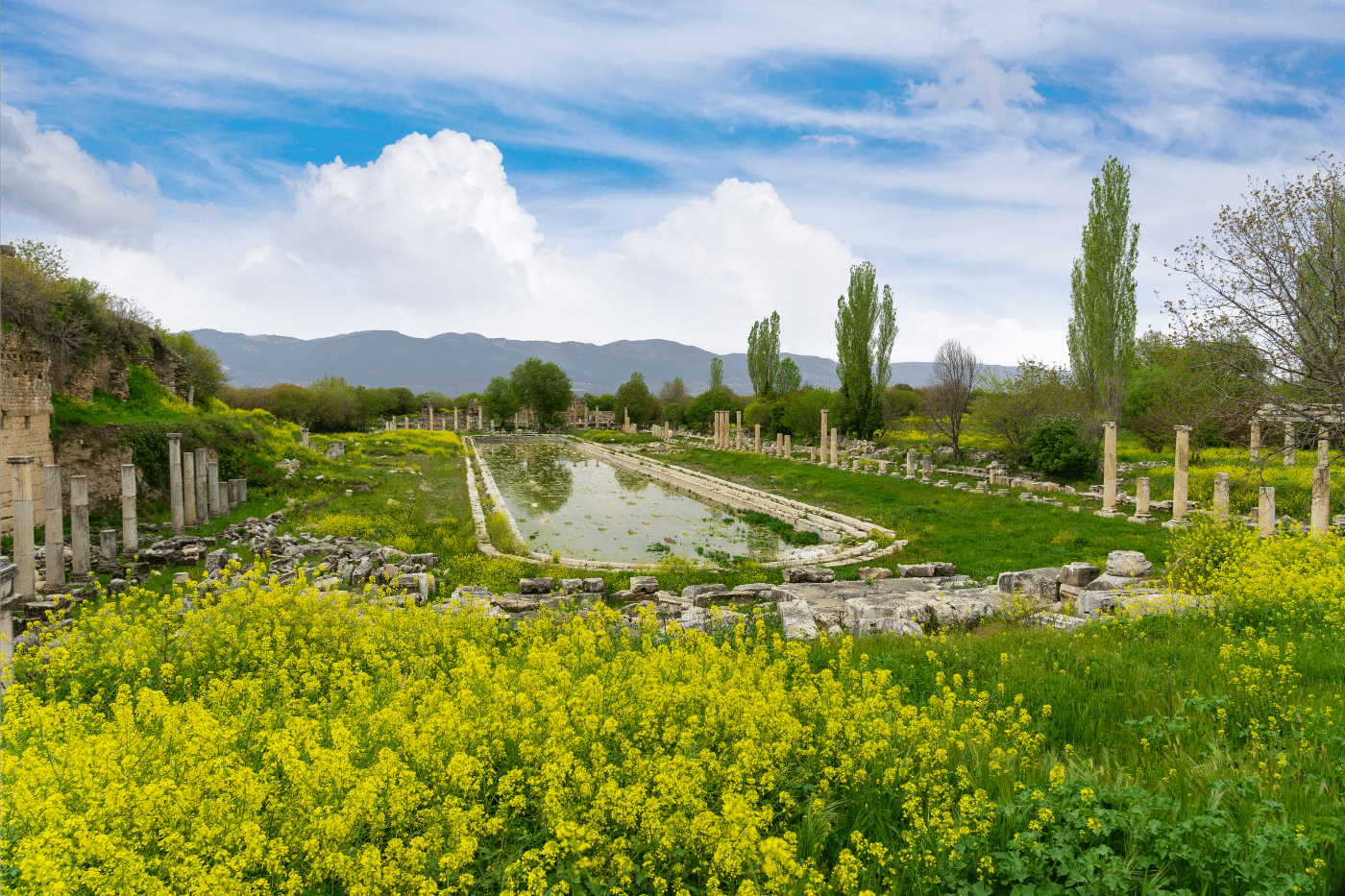The Sacred City of Aphrodite
Aphrodisias, named after the Greek goddess of love and beauty, Aphrodite, stands as one of the most remarkable archaeological sites in Turkey. This ancient city, located in the fertile Meander River valley, was renowned throughout the Roman Empire for its sculpture school and the beauty of its marble works.
The Temple of Aphrodite
The heart of the city was the magnificent Temple of Aphrodite, built in the 1st century BC. This temple was not only a religious center but also a symbol of the city's artistic excellence. The temple's architecture influenced Roman temple design throughout the empire.
Today, visitors can see the impressive remains of the temple, including its massive columns and intricate carvings. The temple's orientation and design reflect the sophisticated understanding of astronomy and geometry possessed by ancient architects.
The Stadium: A Marvel of Ancient Engineering
The Aphrodisias Stadium is one of the best-preserved ancient stadiums in the world, with a seating capacity of 30,000 spectators. This 262-meter-long structure hosted athletic competitions, gladiatorial games, and public events. The stadium's excellent preservation allows visitors to imagine the excitement of ancient sporting events.
The Theater: Center of Cultural Life
The ancient theater of Aphrodisias could accommodate up to 8,000 spectators and was the center of the city's cultural life. Built in the 1st century BC, it hosted theatrical performances, musical events, and political assemblies. The theater's acoustics are still remarkable today, demonstrating the advanced understanding of sound engineering in antiquity.
The Agora: Commercial and Social Hub
The central marketplace, or agora, was where citizens gathered for commerce, social interaction, and political discussion. Surrounded by colonnades and shops, the agora was the bustling heart of daily life in Aphrodisias. The remains of the agora provide insight into the sophisticated urban planning of the ancient city.
The Museum: Home to Exceptional Sculptures
The Aphrodisias Museum houses one of the most important collections of Roman sculpture in the world. The museum's collection includes:
- Portrait sculptures of emperors and local dignitaries
- Mythological figures and decorative reliefs
- Funerary monuments and sarcophagi
- Architectural elements from the city's buildings
The Sculpture School: Legacy of Artistic Excellence
Aphrodisias was famous throughout the Roman world for its sculpture school, which produced some of the finest marble works of antiquity. The city's proximity to high-quality marble quarries and its skilled artisans made it a center of artistic production. Many of the statues and reliefs found throughout the Roman Empire were created in Aphrodisias.
Archaeological Discoveries
Ongoing excavations at Aphrodisias continue to reveal new insights into ancient life. Recent discoveries include:
- Private houses with well-preserved mosaics
- Industrial areas including pottery workshops
- Religious sanctuaries dedicated to various deities
- Water management systems demonstrating advanced engineering
Planning Your Visit
To fully appreciate Aphrodisias, plan to spend at least 3-4 hours exploring the site. The archaeological remains are extensive, and the museum requires additional time. Consider visiting during spring or autumn for the most pleasant weather conditions.
Getting There
Aphrodisias is located approximately 100 kilometers from Denizli and can be reached by car or organized tour. The site is well-signposted and offers parking facilities. Many visitors combine their visit with a trip to Pamukkale, creating a perfect day of natural and cultural exploration.
Aphrodisias offers a unique opportunity to step back in time and experience the grandeur of the Roman Empire through one of its most beautiful and well-preserved cities. The combination of architectural excellence, artistic achievement, and archaeological significance makes it an essential destination for anyone interested in ancient history and culture.
